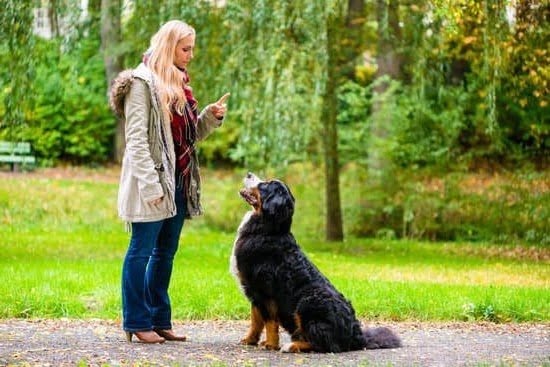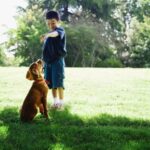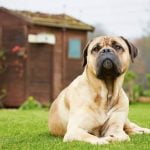Are you interested in learning how to train pitbull hog dogs? Training these courageous and tenacious canines to hunt and corner hogs requires dedication, patience, and a deep understanding of the breed’s instincts. Pitbull hog dogs are known for their remarkable tracking abilities and unwavering determination in the field. In this article, we will explore the essential steps and techniques to successfully train pitbulls for hog hunting.
Pitbull hog dogs have a long history of being used as working dogs for hunting purposes. Their unique skills make them valuable assets in tracking and controlling wild hogs. Understanding the origin and purpose of these dogs is crucial in effectively training them for hog hunting. By delving into their background, we can gain insight into the traits that make them ideal candidates for this specialized type of training.
When embarking on the journey of training pitbulls for hog hunting, it is vital to select the right candidate for the job. Not all pitbulls possess the natural hunting instincts required for this type of work. By carefully choosing a dog with a strong prey drive, intelligence, and physical capabilities suitable for hunting, you can set a solid foundation for successful training endeavors. Stay tuned as we delve deeper into the intricacies of preparing your pitbull for hog dog training.
Understanding the History and Purpose of Pitbull Hog Dogs
Pitbull hog dogs have a long history of being skilled hunters that assist in tracking and capturing wild hogs. This type of training dates back to the early days when settlers needed assistance in controlling the population of wild hogs, which could cause damage to crops and pose a threat to livestock. Pitbulls were specifically bred for their strength, agility, determination, and intelligence in order to excel in hunting down these elusive and powerful animals.
The purpose of pitbull hog dog training is not only to control the wild hog population but also to provide an outlet for the natural instincts and energy levels of these dogs. By engaging them in this type of work, owners can help their pitbulls fulfill their drive to hunt while developing a strong bond between dog and handler.
Understanding the history behind this type of training can give owners insight into why it is important to continue this tradition with respect and care for both the dogs and the animals they hunt.
To effectively train pitbulls as hog dogs, it is crucial to understand the genetics behind their behavior as well as their unique capabilities. The strength, agility, and determination that make pitbulls great hog dogs are traits that need to be carefully honed through proper training techniques.
By building a foundation of basic obedience skills, introducing them gradually to hog scent tracking techniques, and then advancing to teaching them how to locate and corner hogs safely, owners can bring out the best in their pitbulls as skilled hunters. Learning how to train pitbull hog dogs requires dedication, patience, and a deep understanding of their instincts and abilities.
Selecting the Right Pitbull for Hog Dog Training
Pitbulls are known for their strength, tenacity, and intelligence, making them excellent candidates for hog dog training. However, not every Pitbull is suited for this demanding task. When selecting a Pitbull for hog dog training, it is essential to consider the dog’s temperament, physical characteristics, and background.
Here are some key factors to keep in mind when choosing a Pitbull for hog dog training:
- Temperament: Look for a Pitbull that displays courage, drive, and a strong prey instinct. These traits are essential for hog dogs as they need to be fearless and determined during hunts.
- Physical Characteristics: Select a Pitbull with a sturdy build, muscular frame, and high energy levels. These attributes will help the dog endure the physical demands of hog hunting.
- Background: Consider the dog’s lineage and breeding history. Choose a Pitbull with proven hunting abilities in its bloodline to increase the likelihood of success in training.
Once you have identified a suitable candidate for hog dog training, it is crucial to establish a strong bond with your Pitbull built on trust and respect. This foundation will be instrumental in shaping your dog into an efficient and reliable hog hunting companion.
Training pitbull hog dogs requires patience, consistency, and dedication. It is essential to provide proper guidance and positive reinforcement to encourage desired behaviors while correcting unwanted ones. In the following sections, we will delve into how to train pitbull hog dogs through basic obedience training, scent introduction techniques, advanced tracking skills, safety precautions, progress assessment methods, and overall health maintenance tips. By following these guidelines diligently, you can prepare your Pitbull for successful hog hunting endeavors.
Building a Strong Foundation
When it comes to training pitbull hog dogs, building a strong foundation of basic obedience is crucial. These dogs need to be well-behaved and responsive to commands in order to effectively work as hog dogs. Here are some key steps to take when starting the basic obedience training for your pitbull hog dog:
- Start with simple commands such as sit, stay, come, and heel. Consistency is key when training your pitbull, so make sure to use the same commands and gestures each time.
- Use positive reinforcement techniques such as treats, praise, and toys to reward good behavior. Pitbulls are intelligent dogs and respond well to rewards for their efforts.
- Establish yourself as the pack leader by being firm and consistent in your training. Pitbulls are strong-willed dogs and need a confident leader to follow.
In addition to basic commands, it is important to also focus on leash training with your pitbull hog dog. Leash training will not only help you control your dog during hunts but also ensure their safety while out in the field. Here are some tips for leash training your pitbull:
- Start by introducing the leash gradually, allowing your dog to become comfortable with wearing it around the house before moving onto outdoor walks.
- Practice loose leash walking by rewarding your pitbull for walking calmly beside you without pulling on the leash.
- Avoid allowing your dog to pull on the leash or dictate the pace of the walk. Use gentle corrections and redirects to teach them proper leash manners.
By focusing on basic obedience training and leash training early on, you can set a solid foundation for your pitbull hog dog’s overall behavior and performance in their role as a working dog. Remember that consistency, patience, and positive reinforcement are key components of successful training sessions with these intelligent and eager-to-please dogs.
Introducing Hog Scent and Tracking Techniques
Pitbull hog dogs are specifically trained to track and corner hogs during hunting expeditions. One crucial aspect of training these dogs is introducing them to hog scent and teaching them tracking techniques. This part of the training process is essential in honing their natural instincts and abilities to locate and pursue hogs effectively.
To begin the training, it is important to expose pitbulls to hog scent at a young age. This can be done by using scent pads or items that have been in contact with hogs, allowing the dogs to familiarize themselves with the unique smell. Gradually increasing the exposure to different intensities of hog scent will help the pitbulls develop a keen sense of smell and distinguish hog scent from other scents in their environment.
In addition to introducing hog scent, teaching tracking techniques is vital for pitbull hog dogs. This involves guiding the dogs to follow tracks left by hogs, whether it’s through visual cues on the ground or through the air.
Providing consistent training sessions with varying levels of difficulty will enhance their tracking skills and ability to stay focused on the task at hand. By mastering both hog scent introduction and tracking techniques, pitbulls can become proficient hunters capable of locating hogs efficiently during hunting trips.
| Aspect | Importance |
|---|---|
| Hog Scent Exposure | Develops keen sense of smell |
| Tracking Techniques Training | Enhances tracking skills |
Advanced Training
Pitbull hog dogs are known for their strong hunting instinct and determination when it comes to tracking and cornering hogs. To train these dogs effectively, it is essential to understand the advanced techniques involved in teaching them to locate and corner hogs. This process requires patience, consistency, and a deep understanding of both the breed’s natural abilities and the specific skills needed for hog hunting.
One key aspect of advanced training for pitbull hog dogs is introducing them to the scent of hogs and teaching them how to track effectively. This involves creating scenarios where the dogs can pick up on the distinctive odor of hogs and learn to follow the scent trail with focus and determination. Using positive reinforcement techniques such as treats or praise can help reinforce this behavior and encourage the dogs to continue tracking effectively.
In addition to scent training, teaching pitbulls how to locate and corner hogs involves honing their natural instincts for hunting and prey drive. Training sessions should simulate real-world hunting scenarios, allowing the dogs to practice locating hogs in various environments and learning how to position themselves strategically to corner them. Consistent practice, exposure to different hunting situations, and ongoing reinforcement of desired behaviors are crucial for success in this advanced stage of training pitbull hog dogs.
| Key Training Techniques | Effective Strategy |
|---|---|
| Introducing hog scent | Creating scenarios for scent tracking with positive reinforcement |
| Teaching cornering skills | Simulating real-world hunting scenarios for strategic positioning |
Safety Precautions and Equipment for Pitbull Hog Dog Training
Importance of Safety in Hog Dog Training
When training pitbulls to be hog dogs, safety should always be a top priority. These dogs are working closely with potentially dangerous animals and situations, so it is crucial to take precautions to protect both the dogs and their handlers. One of the key aspects of safety in hog dog training is proper equipment. This includes using sturdy collars and harnesses, as well as protective gear like vests to prevent injuries during confrontations with hogs.
Equipment Needed for Hog Dog Training
In addition to protective gear, there are other essential pieces of equipment needed for training pitbulls to be hog dogs. A GPS tracking collar can be invaluable in locating your dogs if they get lost while on a hunt.
Training leads and long lines are also necessary for teaching commands and controlling your dog while tracking hogs. It is important to invest in high-quality equipment that is durable and reliable, as it will ensure the safety and effectiveness of your training sessions.
Setting Up Safe Training Environments
Another important aspect of safety in hog dog training is creating safe training environments for both the dogs and handlers. This includes selecting appropriate locations for training sessions that are free from hazards like steep cliffs or bodies of water that could pose a danger to the dogs.
It is also essential to establish clear boundaries during training exercises to prevent accidents or injuries. By prioritizing safety measures and using the right equipment, you can minimize risks during pitbull hog dog training sessions.
Assessing Progress and Fine-Tuning Training Methods
Monitoring Training Progress
To ensure the effectiveness of your training methods on pitbull hog dogs, it is essential to consistently monitor their progress. This can be done by evaluating their performance during training sessions, assessing their response to commands, and observing their behavior while practicing hog scent tracking techniques. Keep track of milestones reached, areas needing improvement, and any behavioral changes that may indicate the need for adjustments in training strategies.
Adjusting Techniques for Optimal Results
As you closely monitor the progress of your pitbull hog dogs, be prepared to fine-tune your training methods accordingly. Not all dogs respond the same way to specific techniques, so it may be necessary to experiment with different approaches to find what works best for each individual dog. Whether it’s modifying the intensity of a command, altering the timing of rewards, or revisiting basic obedience exercises, adaptability and flexibility are key when fine-tuning training methods.
Seeking Professional Guidance
In some cases, despite your best efforts, you may encounter challenges in training pitbull hog dogs effectively. When faced with such obstacles, don’t hesitate to seek professional guidance from experienced trainers or behaviorists who specialize in working with this breed.
They can provide valuable insights, personalized advice, and advanced techniques on how to train pitbull hog dogs more efficiently. Remember that seeking help is not a sign of weakness but rather a proactive step towards ensuring the success and well-being of your canine companions.
Maintaining the Health and Well-Being of Pitbull Hog Dogs
In conclusion, ensuring the health and well-being of pitbull hog dogs is essential for their overall performance and longevity in their role. Just like any other dog, these working animals require proper care, nutrition, and regular veterinary check-ups to ensure they are in peak physical condition. Regular exercise is key to keeping pitbull hog dogs healthy and strong, as it helps them maintain their stamina and agility during hunting activities.
Additionally, monitoring their diet is crucial to provide the necessary nutrients for their active lifestyle. A balanced diet tailored to their activity level and size will help keep them at an optimal weight and prevent health issues associated with obesity. Regular grooming, including nail trimming, ear cleaning, and dental care, is also important to prevent infections and maintain their overall hygiene.
Lastly, mental stimulation is equally important for pitbull hog dogs. Engaging them in interactive play, training sessions, or providing puzzle toys can help prevent boredom and destructive behaviors.
By investing time and effort into the physical and mental well-being of pitbull hog dogs, owners can ensure that these loyal working companions lead healthy and fulfilling lives while excelling at their duties on the field. Remembering these aspects of care alongside knowing how to train pitbull hog dogs effectively will undoubtedly contribute to a successful partnership between owner and dog in hunting hogs.
Frequently Asked Questions
How Do You Train a Hog Dog?
Training a hog dog involves starting at an early age to establish good behavior and reinforce commands consistently. It’s important to use positive reinforcement techniques and ensure the dog understands its role in hunting activities.
What Age Is Too Late to Train a Pitbull?
There is no set age that is too late to train a pitbull, as they are intelligent and can learn throughout their lives. However, starting training when they are young is ideal to establish good habits early on and prevent behavioral issues.
How Do You Discipline a Pitbull?
Discipline with a pitbull should focus on positive reinforcement rather than punishment. Consistency in training, setting clear boundaries, and rewarding good behavior are key strategies when disciplining a pitbull. It’s important to be patient and understanding while training them.

Welcome to the blog! I am a professional dog trainer and have been working with dogs for many years. In this blog, I will be discussing various topics related to dog training, including tips, tricks, and advice. I hope you find this information helpful and informative. Thanks for reading!





